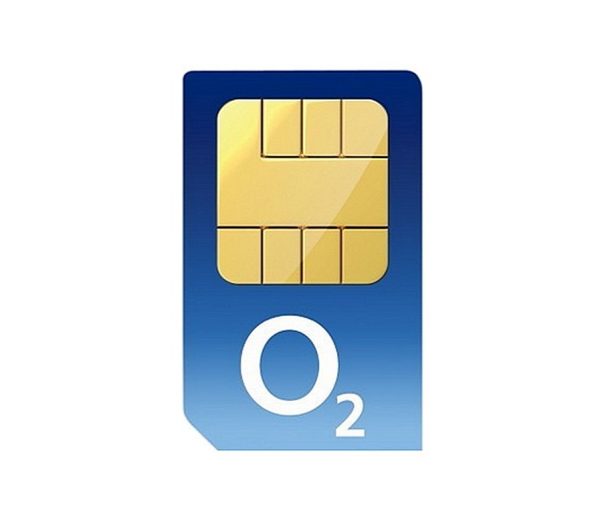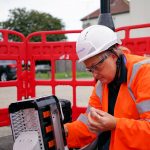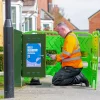EE Get O2 Mobile UK Ad Banned by ASA for Best Coverage Claim

Mobile operator O2 (VMO2) has had one of its press adverts banned by the UK Advertising Standards Authority (ASA) after rival EE (BT) complained that it misleadingly made a claim of being “Britain’s Best for Coverage,” which was based on flaky feedback from a consumer survey, rather than objective technical evidence.
The original press advert for O2’s service was first shown all the way back in April 2020 and included text that stated, “On the network voted Britain’s Best for Coverage“. This was presented alongside the Uswitch logo, which in small text referenced the operator as the “Uswitch Best Network Coverage Winner 2020” (referencing the comparison site’s consumer survey of 12,000 UK adults).
However, rival operator EE complained that “comparative claims about network coverage should be based on objective technical evidence rather than consumer surveys“, and called the promotion “misleading“. Of course EE should know something about this, since one of their own adverts was banned last year for making an “UNBEATABLE.. No.1 Network” claim (here).
Advertisement
In response, O2 argued that “subjective consumer experience of network coverage was real and valid“, but the ASA was having none of it.
ASA Ruling (REF: A20-1062520 Telefonica UK Ltd)
We noted that the methodology only required consumers to appraise their own provider in relation to coverage. They were asked “How satisfied are you with how your mobile phone network performs on each of the following?” with one of the options being “coverage”. We considered that the survey question was very broad and it was unclear, for example, what the criteria were for rating “performance”, or how “coverage” was defined. We noted that consumers were likely to have differing understandings of what constituted good coverage, depending on their typical usage habits.
Furthermore, we considered that it was unlikely that participants would have an insight into how their own network compared against all others on the market when rating the coverage they experienced. Overall we were concerned that the data showed only highly subjective experiences and it was not clear how responses could be compared in a meaningful way to come to a view that one network was the “best”. The comparative nature of the claim was required by the CAP Code to include an objective component, and it was unclear to us how a consumer perception survey alone, based on respondents’ subjective opinion of their own network, would deliver such data.
Because consumers would expect, and the Code required, the claim “on the network voted Britain’s Best for Coverage” to be based on an objective comparison of O2’s network coverage with their competitors when that was not the case, we concluded that it was misleading and breached the Code.
As we’ve said many times before, mobile operators and broadband ISPs should generally avoid making vague “best“, “most reliable” or “fastest” style claims in their promotions because they are incredibly difficult to substantiate in a fair, accurate and evidenced based way. Despite this, every single one of the major operators is guilty of having played this card at one time or another, and all tend to end up being banned.
The catch is that the ASA usually only takes action long after the advert has run its course and, since the authority almost never seems to make use of their backstop powers to punish operators in a meaningful way, then they continue to do it. The ASA reasons that the bad publicity alone from such rulings will have enough of an impact to discourage such promotions, but that’s certainly open to debate as they keep occurring.
As for the above ruling, the ASA banned the advert in its current form and warned O2 to ensure that they “held adequate and objective evidence to support comparative claims.”
Advertisement
Mark is a professional technology writer, IT consultant and computer engineer from Dorset (England), he also founded ISPreview in 1999 and enjoys analysing the latest telecoms and broadband developments. Find me on X (Twitter), Mastodon, Facebook, BlueSky, Threads.net and Linkedin.
« Trenches Law Boost ITS Technology’s FTTP Broadband Rollout
NETGEAR Broadband Routers Exposed to New Security Bug »























































Hahaha.
The four MNOs do love to give eachother a few slaps!
EE was right to get it banned. As a few people ticking boxes is nothing to boast about.
Network testing results from apps like Root Metrics and Open Signal are what we should be paying attention to.
Anyway, O2 in Wales is rather disappointing, especially in Mid Wales.
Three has better coverage than them in the region. I was never without signal on my last visit there!
I’ve found Rootmetrics to be unreliable.
Why is it i do a speedtest via their app to help coverage and it tops around 3/400. Then a test via Speedtest.net shows 6/700?
Always felt rootmetrics was a bit biased towards EE during the testing i’ve done.
James yes same here. Rootmetrics says I have 200mbit. Speedtest.net connected to a fast server shows 300
There must be something to it.
I personally switched from EE to VODAFONE last year because of poor EE coverage in and around Southampton.
I just switched TO EE from Vodafone and my god, so much for being the fastest. What surprises me is that three is faster, and it’s the same mast. I can’t understand it. But I’ve also been busted down to H+ quite a lot. I can actually see the mast from my house too and have line of sight with it. NSG confirms the phone is using the same mast as cellmapper says it i
Who really reads these rulings outside of the IT world, the ASA should be using the daily mail effect.
Big fine.. DM grabs it as click bait, bigger embarrassment,but wait no, Don’t bite the hand that feeds it.
No real deterrent then.
Quite frankly the ASA are a weak, lazy, and worse than David Blunkett’s plastic police.
Nobody takes the ASA serious, they have been refusing for years to do their job, still allowing misleading “fibre broadband” adverts for copper lines.
Yet another damning case against the ASA’s existence. How are they funded and what on earth is their organisational objective or mission statement?
They are useless as a deterrent, as evidenced by this and myriad similar cases.
They are useless as a ruling body, as they rarely if ever exercise their powers to issue fines.
They do are useless in terms of protecting consumers because by the time they take any action at all, the damage has almost always been done.
So, on the surface, the ASA appears to be a useless, good for nothing facade employing people whose work amounts to nothing.
An idea might be to scrap it and start again by building something that actually does what it’s meant to do. Probably far too much to ask in the UK and in this social/political/economical climate.
If they were fined the same as the cost of the ad campaign, companies might be a little less willing to trot out vague claims and blatent misinformation.
While we’re at it we could stop bold headline statements that are then qualified as, well, not quite true,in tiny small print
This Is Rather funny considering the complaint it from EE.
I previously used Orange which then merged to become EE and switched to O2 due to the much better coverage. I have personally experienced how good O2 coverage is and how bad EE coverage is.
I feel that personal experience is better than technical data and in this case I know that EE don’t have good coverage.
Everyone talking about how bad EE’s coverage is should go up to the Scottish highlands where they had signal pretty much everywhere where as Vodafone lost it north of Glasgow and the reason the signal is not so good is that they use a much higher band and hopefully that can get sorted in the future as I suffer from bad signal indoors but that’s because of the building, I’ve been testing them for a while and I’m happy.